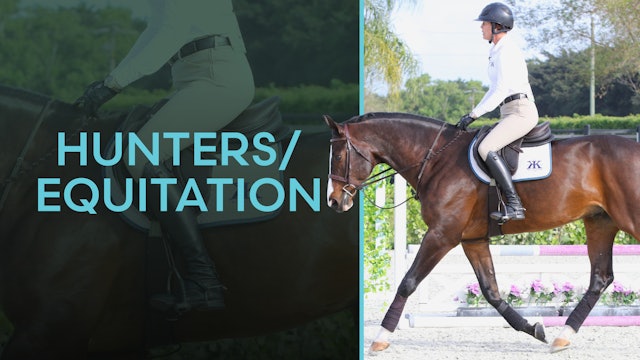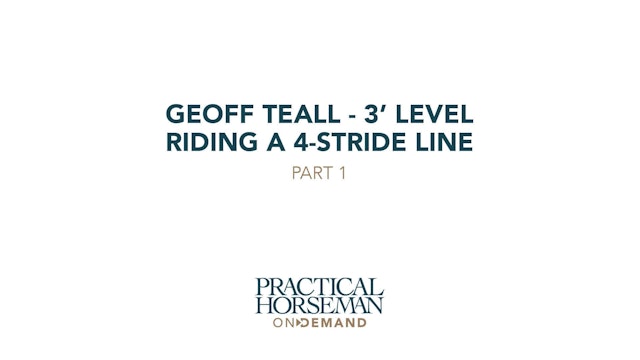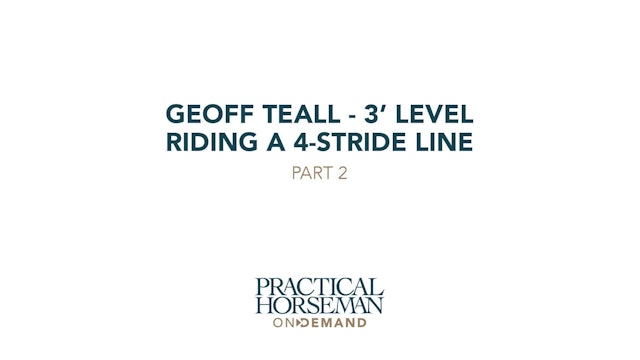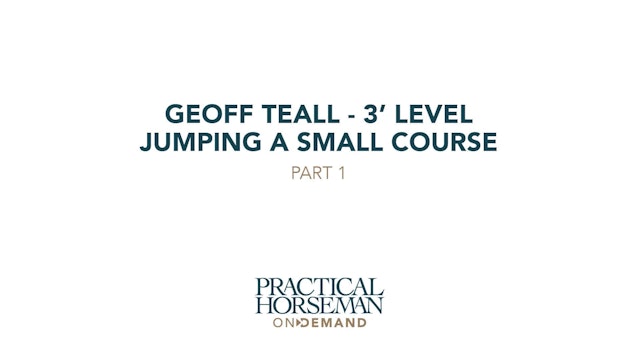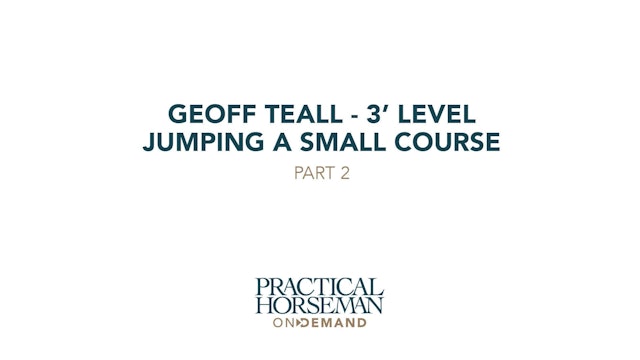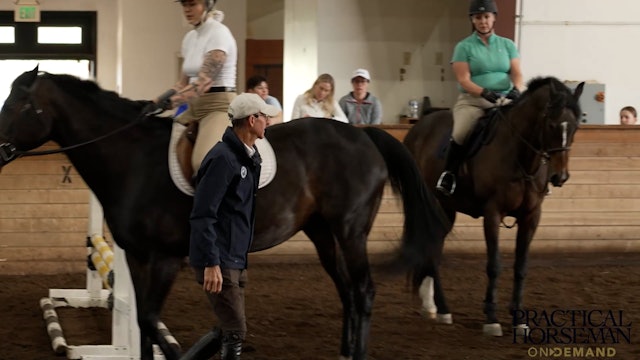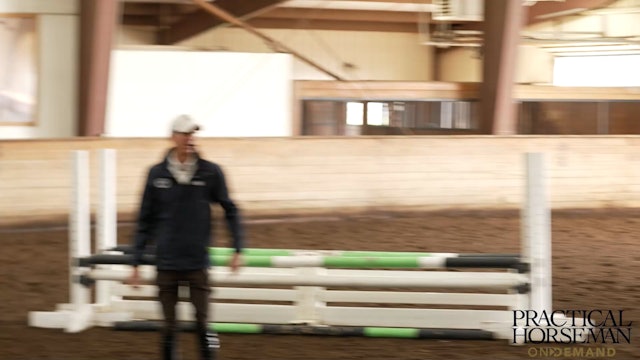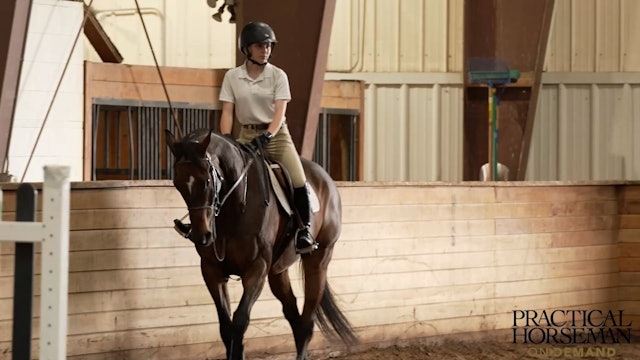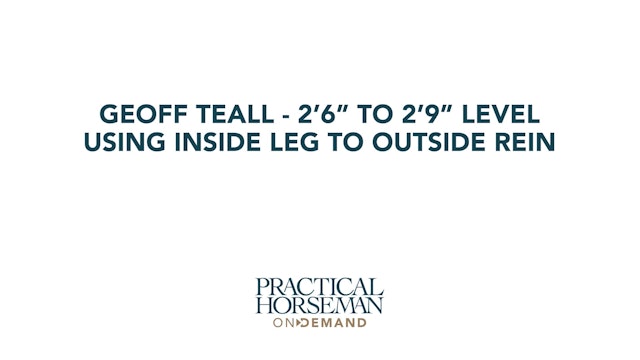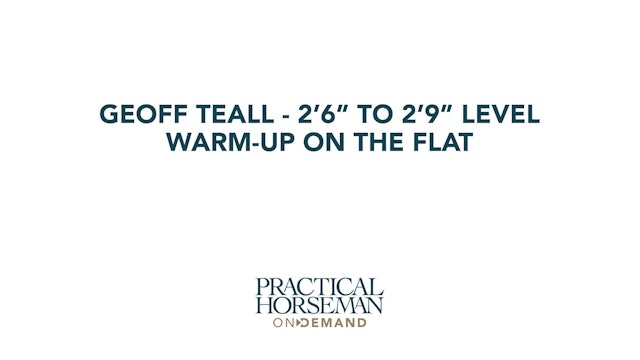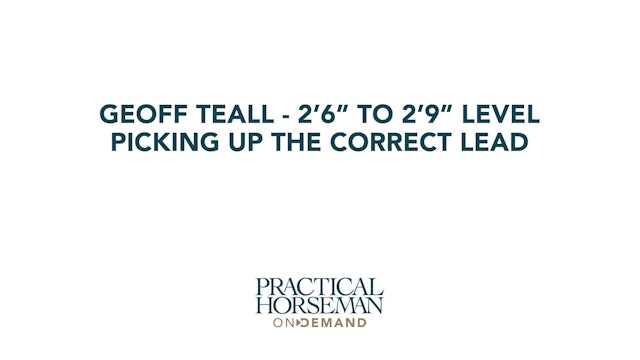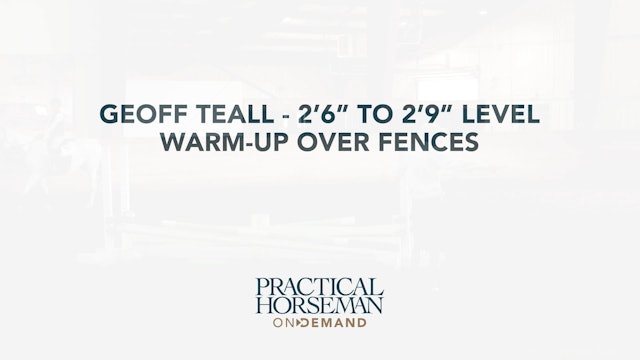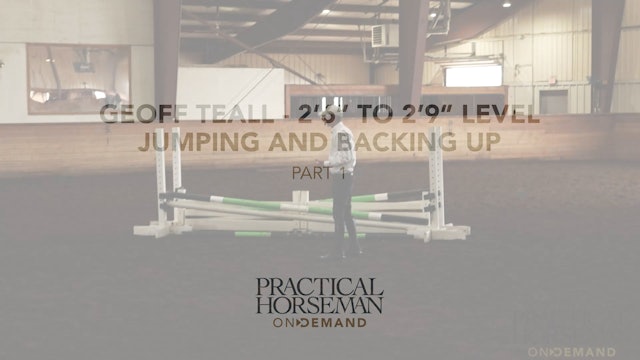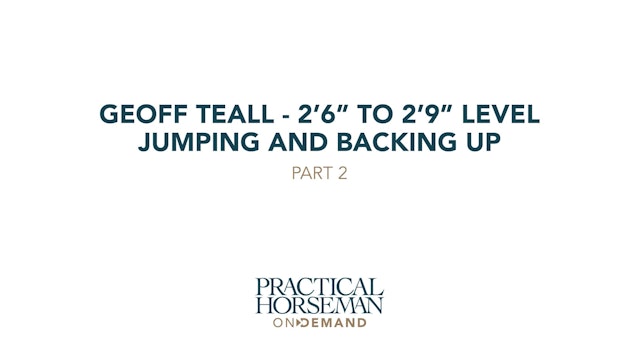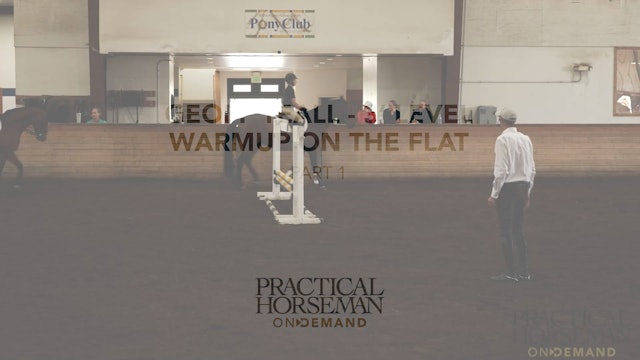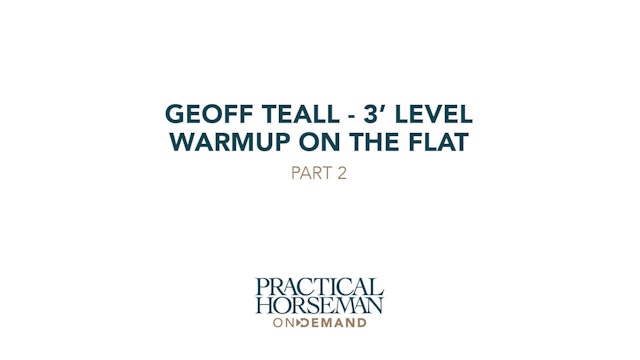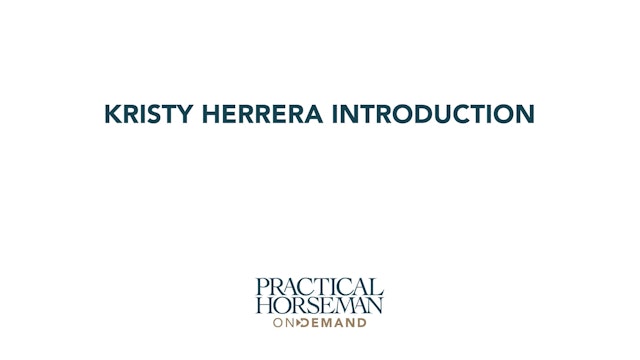Hunters/Equitation
Modern hunter classes were designed to test the qualities and attributes of a successful hunt horse negotiating natural obstacles (fences, hedges, stone walls). These classes are subjectively judged based on the horse’s performance over fences as well as its quality of movement under saddle on the flat.
Equitation classes are judged on the rider’s ability, form and skill to allow the horse to perform at its best, but the horse itself is not judged at all. The judging is subjectively based on the rider’s position, style, proficiency, accuracy, use of the aids, as well as an overall impression of complete and quiet control. Search for your favorite coach or by training topic.
-
Geoff Teall – 3’ Level – Riding a 4-Stride Line – Part 1
Geoff Teall has the clinic riders in the 3' group practice an exercise focusing on a four-stride line. He explains that the riders need to establish a pace that makes the four-stride line work in a relaxed, forward four-strides.
-
Geoff-Teall – 3’ Level – Riding a 4-Stride Line – Part 2
The clinic riders continue the four-stride line exercise, focusing on correct pace. Geoff Teall also says the riders need to work more by feel so that they know what adjustments to make. Additionally, the more the riders can allow the horses forward, the easier it will be to keep them straight an...
-
Get to Know Geoff Teall
Get to know hunter trainer and judge Geoff Teall, including his teaching philosophy with flatwork and jumping, his teaching style, and all of the wonderful people he has met throughout his career.
-
Geoff Teall – 3’ Level – Jumping a Small Course – Part 1
On the first day of the clinic, Geoff Teall wants the horses in the 3-foot group to stay up and out and maintain a steady pace without the riders pushing or holding. He leaves it up to the riders to determine if they need to stop and back the horse between the jumps. The rider’s job is to get the...
-
Geoff Teall – 3’ Group – Jumping a Small Course – Part 2
All the riders in the Geoff Teall clinic repeat the course and exercise that they did in Part 1. Geoff talks about how all of this training is a slow progression, and that they keep preparing the horse for the next day of training. The horses and riders both show improvement as they all better un...
-
2’ to 2’3” Level – Rein Length and Hand Position
Geoff Teall has the group of riders start with a rising trot to warm up. He then has a discussion about the correct rein length and hand position that is the most effective contact for cantering and jumping a course. Often riders have reins that are too long and hands that are too wide and low. T...
-
2’ to 2’3” Level – Leg Position
Geoff says that “The most important part of your position has to start with legs.” He goes to each rider and adjusts their leg position to the way he feels is most secure for cantering and jumping. He stresses that the toes should be turned out slightly so that the ankles and knees can relaxed. T...
-
2’ to 2’3” Level – Body Angles and Position
The next area Geoff discusses is the rider’s upper body position. He goes over the four different body angles – at the ankles, knee, hip and elbow. He discusses how to correctly close the hip angle and not lean forward by bending at the waist. Then the riders practice how to bend at the hip and b...
-
2’ to 2’3” Level – Understanding Pace
Geoff goes over the different gaits and how the rider’s body should be positioned in the canter to be balanced and to go with their horses. He wants the horses to keep the same speed so that everything looks smooth and even.
-
2’ to 2’3” Level – Introducing a Jump
Geoff starts the horses over “half” a crossrail with one pole at an angle. This allows the rider to do what’s best for the horse by choosing what part of the jump to ride towards. He says the horse should trot in a steady rhythm on a straight line and then stop after the jump, which teaches the h...
-
2’ to 2’3” Level – Control Over Fences | Geoff Teall | PART 01
The group does multiple fences with circles and stops in between to help the horses come back and then keep a steady rhythm. Geoff wants the riders to set a slow speed, maintain that speed and then bring the horse back after the jump. He stresses thinking ahead so that the riders are able to plan...
-
2’ to 2’3” Level – Control Over Fences – Part 2
The riders repeat the exercise, but Geoff says that the riders need to think ahead more quickly. Once they establish their pace, they should keep it and leave it alone. Before the jump they should be thinking about what they need to do after the landing. Then they need to promptly bring the horse...
-
2’6” to 2’9” Level – Working Inside Leg to Outside Rein
To build on the canter leads, Geoff talks about working with the inside leg and outside rein. The inside leg should tell the horse to go diagonally forward and out towards the outside rein, which are diagonal aids. Geoff prefers the outside rein to be an opening rein because it takes the horse fo...
-
2’6” to 2’9” Level – Warm-up on the Flat
Geoff has the group warm up on the flat. He stresses the importance of the walk and how it can be used to set the standard before going to a higher gait. They work on establishing a good pace at all gaits, which is slightly faster than most of the riders are comfortable doing. At the same time, t...
-
2’6” to 2’9” Level – Picking up the Correct Canter Lead
Geoff has a discussion about how to pick up the correct canter lead and then has the riders work on it in both directions. He wants riders to collect the walk, shift the weight off the inside shoulder and maintain that through the transition to canter. It is important for the rider to take her ti...
-
2’6” to 2’9” Level – Warm-up Over Fences
After warming up on the flat, Geoff has the riders jump a single fence, halt on the line, turn away from the inside of the arena and jump the fence in the opposite direction. The biggest issue the riders have is getting their horses stop after the jump because they are used to continuing around t...
-
2’6” to 2’9” Level – Jumping and Backing Up – Part 1
To help with the idea of stopping after the fence, Geoff has the riders stop straight, relax, back up a couple of steps and then go forward again. He asks the horse to back by bracing his heel slightly forward, closing his fingers on the reins and asking his horse to come up and back. When the ho...
-
2’6” to 2’9” Level – Jumping and Backing Up – Part 2
They continue working on stopping straight and backing after the jump. The horses start to balance back more so they can stop sooner. It is important that the moment the horse gives and backs up, the rider has to soften the hand to reward the horse and go forward. In some cases, the rider needs t...
-
3’ Level – Warmup on the Flat – Part 1
Geoff does a review of rider position as the group warms up on the flat. He also wants to make sure the horses work equally in both directions and that they stay relaxed and maintain a steady pace regardless of gait.
-
3’ Level – Warmup on the Flat – Part 2
Geoff does a review of rider position as the group warms up on the flat. He also wants to make sure the horses work equally in both directions and that they stay relaxed and maintain a steady pace regardless of gait.
-
Introduction | Kristy Herrera
Kristy introduces her series of hunter/jumper videos.
-
Helping a Rider that Pulls Out of the Corner | Kristy Herrera
Kristy McCormack (Herrera) explains and has a rider demonstrate how to help fix a rider that "pulls out of the corner." They start with cantering a ground pole and go to jumping a small fence. The focus is on having the rider get used to a forward hand position with a soft rein coming out of the ...
-
Correcting a Horse that Drifts | Kristy Herrera
Kristy McCormack (Herrera) explains and has a rider demonstrate how to help a horse that drifts. They start on the flat using counter flexion to help keep the horse straight. Then they progress to cantering a cavalletti also using a counter bend and outside leg to help keep the horse from driftin...
-
Improving Transitions on the Flat | Kristy Herrera
Kristy McCormack (Herrera) helps a rider work on transitions with a horse that can be fussy in the bridle. She wants the rider to maintain a steady contact and then add leg, having the horse move forward into the contact. She reminds the rider that in a down transition the leg has to go on first ...

